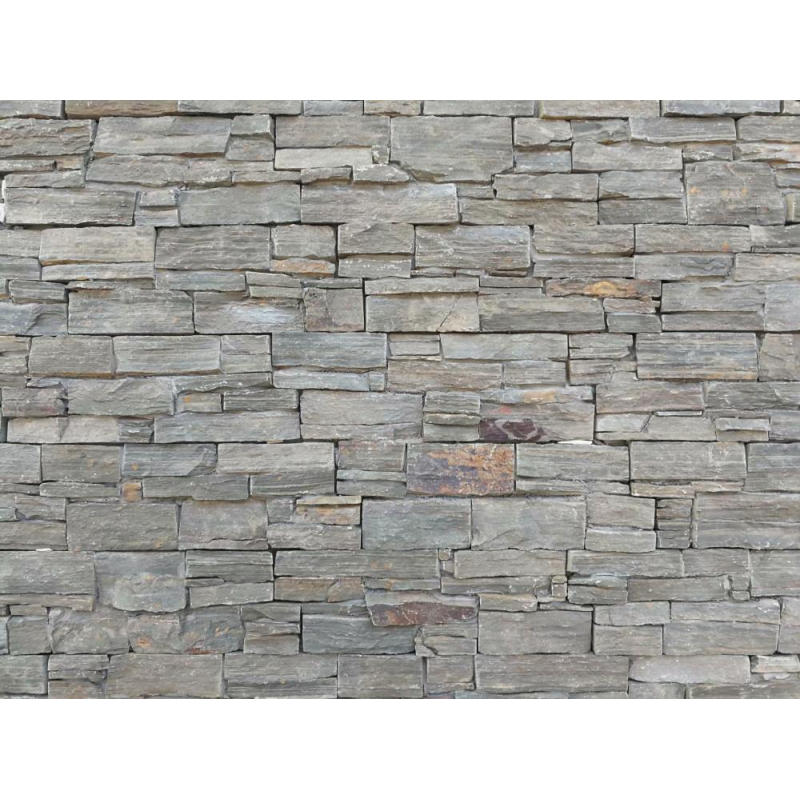
Cloch nádúrtha ar cheann de na hábhair is coitianta a úsáidtear i dtithe agus gairdíní. Ach ar stop tú riamh ag déanamh iontais de cén áit ar tháinig do chuid tíleanna cloiche, brící nó urláir ar leith?

Natural stone was created thousands of years ago when the Earth was just a ball of mineral gases. As these gases began to cool down, they compressed and solidified to form the world we know today. It was during this process that natural stone was formed – the type of stone created depends on what type of minerals were combined at that time. This was a slow process that occurred over millions of years. As the Earth began to settle, many of these seams of stone were gradually pushed to the surface by heat and pressure, creating the large formations we see today.
Stone can come from anywhere in the world, and the type of stone is determined by its origins. There are quarries in America, Mexico, Canada, Italy, Turkey, Australia, and Brazil, as well as many other countries around the globe. Some countries have multiple natural stone quarries, whilst others only have a few. Let’s look in closer detail at where particular stones originate and how they were formed.
Marmar is the result of limestone that has been altered through heat and pressure. It’s a versatile stone that can be used on virtually anything – statues, stairs, walls, bathrooms, counter tops, and more. Usually seen in white, marble is also common in black and grey tints, and has great weather endurance.
Grianchloch eascraíonn as gaineamhchloch a athraíodh trí theas agus comhbhrú. Tagann an chloch go príomha i mbán, ach is féidir teacht uirthi freisin le tinteanna donn, liath nó glasa uirthi. Tá sé ar cheann de na cineálacha cloiche nádúrtha is deacra, rud a fhágann gur rogha iontach é le haghaidh aghaidheanna tógála, countertops, agus struchtúir eile a dteastaíonn clocha tromshaothair orthu.
Eibhear ar dtús ba chloch thorthúil í a bhí faoi lé magma (lava) agus a athraíodh trí nochtadh do mhianraí éagsúla. Tá an chloch le fáil go coitianta i dtíortha ina bhfuil ardghníomhaíocht bholcánach le feiceáil ag pointe éigin, agus tá sé ar fáil i raon leathan dathanna ó dhubh, donn, dearg, bán, agus beagnach gach dathanna eatarthu. Is rogha iontach é eibhir do chistineacha agus seomraí folctha mar gheall ar a cáilíochtaí antibacterial.
Aolchloch mar thoradh ar chomhbhrú coiréil, sliogáin mhara, agus saol eile aigéin le chéile. Tá dhá chineál aolchloiche ann, cineál níos déine atá lán de chailciam, agus cineál níos boige le níos mó maignéisiam. Is minic a úsáidtear aolchloch chrua i dtionscal na tógála, nó talamh suas agus a úsáidtear i moirtéal mar gheall ar a cháilíocht uiscedhíonach.
Cloch Ghorm is sometimes referred to as basalt, and is one of the most common natural stones around the world. Bluestone forms through the alteration of lava, and because of this, is one of the closest stones to the Earth’s surface. Basalt is generally darker in colour, and is used as house roofing and floor tiles because of its hard texture.
Slinnte Cruthaíodh nuair a athraíodh dríodar scealla agus láibchloch trí theas agus brú. Ar fáil i dathanna ó dhubh, corcra, gorm, glas agus liath, tá an-tóir ar sclátaí le haghaidh díonta mar is féidir é a ghearradh go tanaí agus teochtaí fuar a sheasamh gan mórán damáiste. Is minic a úsáidtear sclátaí freisin mar leacú urláir mar gheall ar a nádúr buan.
Travertine is created when floodwaters wash through limestone, leaving mineral deposits throughout. As it dries out, the extra minerals solidify to gradually create a much denser material called travertine. This stone is good as a replacement for marble or granite, as it’s much lighter and easier to work with, yet still durable. For this reason travertine is often used on floors or walls, and is estimated to last around fifty years if maintained regularly.